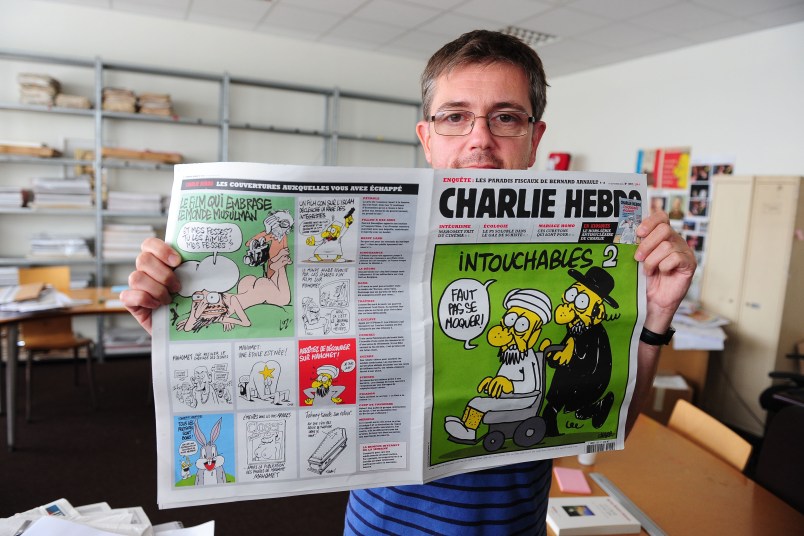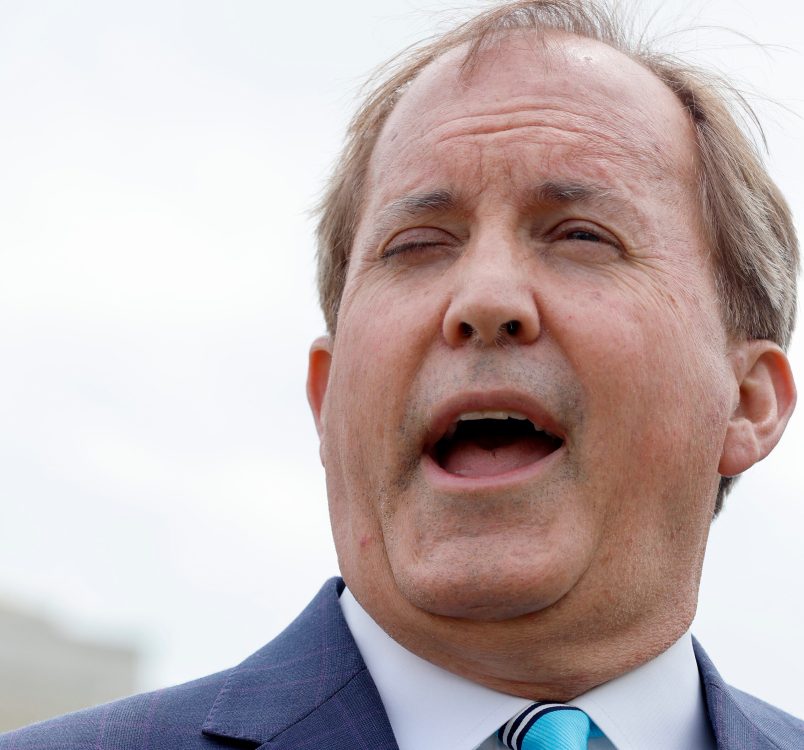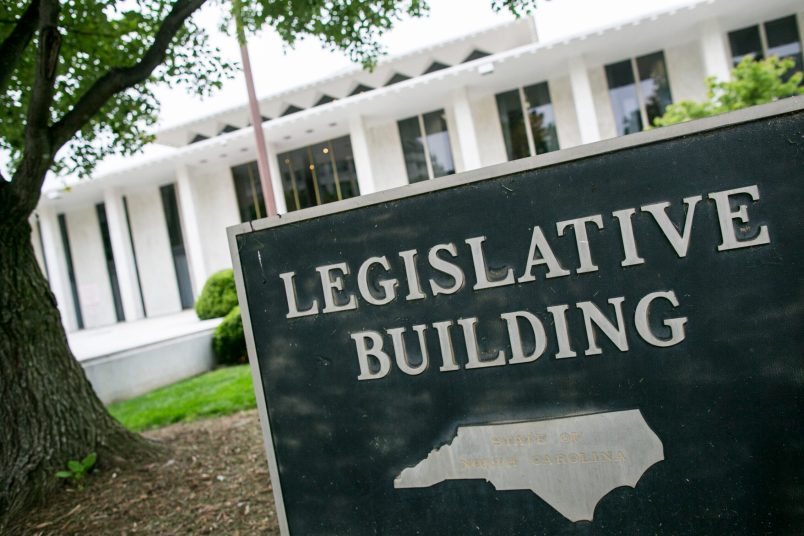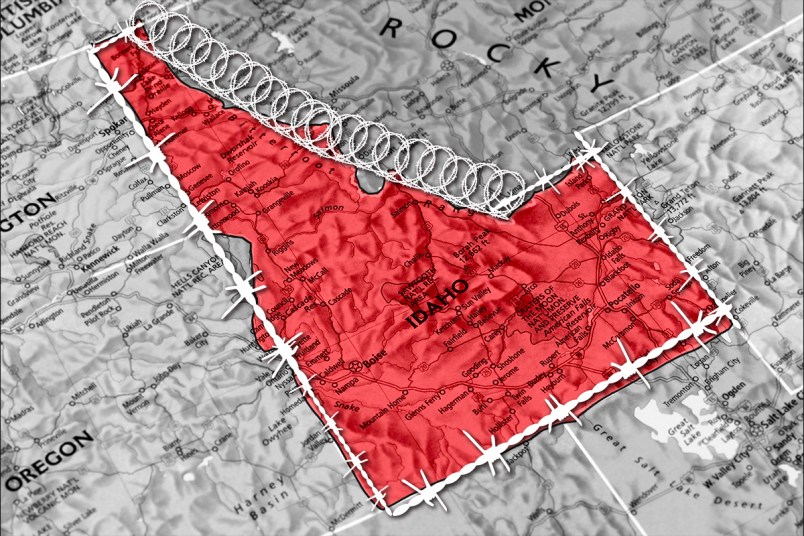The world looked on in horror Wednesday as three gunmen carried out out a deadly attack on the Paris offices of satirical French newspaper Charlie Hebdo.
At least 12 people were killed in the attack, including its editor, a cartoonist and two police officers. One of the police officers had been assigned to guard the deceased editor Stephane Charbonnier, also known as Charb, after he received threats.
The Catholic church, and French and world politicians were some of the publication’s favorite punching bags. It also frequently aimed its satire at Islam, and its cartoons of the Prophet Muhammad in particular caused trouble for Charlie Hebdo and its staff. The Associated Press reported that al-Qaeda published a threat to Charb in its magazine in 2013.
About 7.5 percent of France’s population as of 2010 was Muslim, according to Pew. Depictions of the Prophet Muhammad are against Islamic law, and Charlie Hebdo angered that community over the last decade as it repeatedly turned to Muhammad to denounce terrorists in its cartoons.
Here are some of the keys to understanding Charlie Hebdo’s place in French journalism and its history as a lightning rod for Muslims.
What is Charlie Hebdo, exactly?
Charlie Hebdo appeared in 1970 with much of its staff coming on board from the publication Hara-Kiri, which folded after it mocked the death of former French President Charles de Gaulle, according to Time. Its name references the Charlie Brown comics.
Time reported that while Charlie Hebdo rose to prominence thanks to its controversial cartoons on religion and politics, it never gained much of a readership. It was shuttered from 1981-1992 due to a lack of funds.
The New York Times estimated its current weekly circulation at about 30,000.
It’s been accused of anti-Semitism
One of Charle Hebdo’s cartoonists was dismissed from the paper after he was accused of anti-Semitism in an item about former French President Nicolas Sarkozy’s son.
Maurice Sinet, who went by the pen name Siné and who the New York Times described as a “radical left-wing cartoonist,” wrote about Jean Sarkozy in 2008 after the 21-year-old had a complaint about ramming his scooter into the back of a BMW dismissed.
“It’s necessary to state that the complainant is Arab!” Sinet wrote in reference to the BMW’s owner, as quoted by the New York Times. “And that’s not all. [Jean Sarkozy] has just said that he wants to convert to Judaism before marrying his fiancée, a Jew and heiress of the founders of Darty. He will go far in this life, the little one!”
Val, the former editor, asked Sinet to retract the piece. Sinet responded that he’d rather castrate himself and was subsequently fired, according to the Times.
It landed in court for allegedly inciting racism
After Danish newspaper Jyllands-Posten published 12 drawings of the Prophet Muhammad in late 2005 and the Christian newspaper Magazinet in Norway followed suit, the diplomatic and economic consequences reverberated for months.
Islamic nations recalled ambassadors, closed their embassies and threatened boycotts. Muslims across the Middle East burned Danish and Norweigan flags.
Then in February 2006, Charlie Hebdo reprinted the controversial cartoons in a special issue. That prompted two French Muslim organizations to sue the publication for incitement to racism. One of the cartoons that the Muslim groups took issue with depicted Muhammad with a bomb under his turban.
French President Francois Hollande, who was the head of the French Socialist Party at the time, testified on Charlie Hebdo’s behalf.
The editor at the time, Philippe Val, was acquitted in 2007. He had defended the publication of the cartoons as an attack on terrorists, not an attack on Muslims.
It was forced to move offices after being firebombed
Charlie Hebdo’s offices were destroyed shortly after it announced an issue “guest-edited” by the Prophet Muhammad in November 2011.
In a nod to an Islamist political party’s election victory in Tunisia, the publication renamed itself “Charia Hebdo” — a reference to Sharia law — and included a cartoon of Muhammad on its cover that read “100 lashes if you don’t die of laughter,” according to the New York Times.
As the issue was on its way to newsstands, a Molotov cocktail was thrown at its offices. Charlie Hebdo’s website was also hacked with a message in English and Turkish that read “You keep abusing Islam’s almighty Prophet with disgusting and disgraceful cartoons using excuses of freedom of speech. Be God’s curse upon you,” according to British newspaper The Telegraph.
Charbonnier was provided with security after this incident.
It was widely criticized for 2012 naked Muhammad cartoon
Following widespread protests over the film “The Innocence of Muslims,” Charlie Hebdo lampooned the Muslim world’s outrage with a cartoon entitled “Mohammed: a star is born” that depicted the prophet bending over naked with genitals exposed, according to the New Yorker.
That film had been invoked in aftermath of the deadly attack on the U.S. consulate in Benghazi, Libya. After the staff of Charlie Hebdo went ahead and published the cartoon over the French government’s objections, France shuttered embassies and schools in 20 countries, according to Reuters. It also sent riot police to Charlie Hebdo’s offices for protection.
Even the White House weighed in. Then-press secretary Jay Carney expressed support for upholding freedom of speech, but said the Obama administration had “questions about the judgment of publishing something like this.”
The blowback angered Charbonnier, who told Reuters at the time “We have the impression that it’s officially allowed for Charlie Hebdo to attack the Catholic far-right but we cannot poke fun at fundamental Islamists.”






